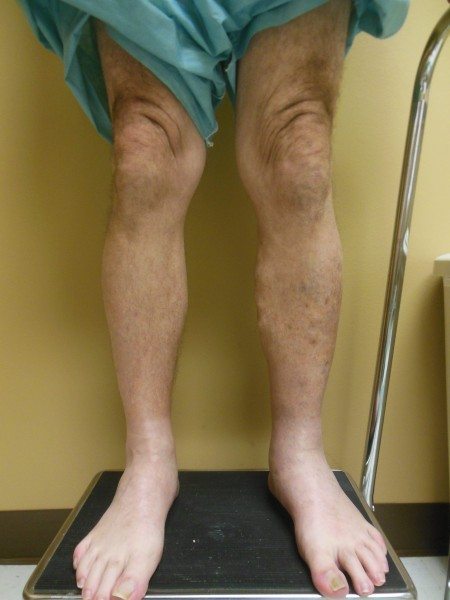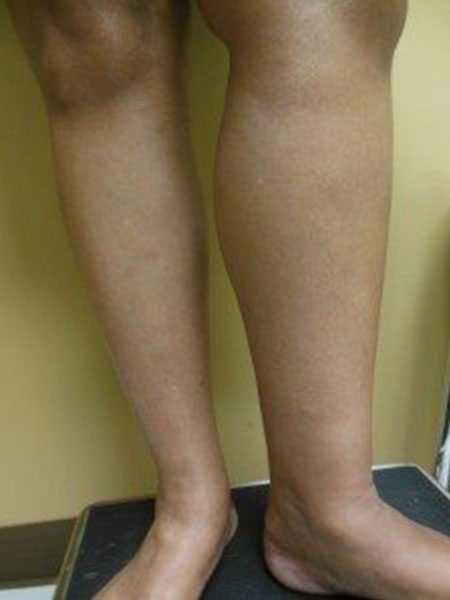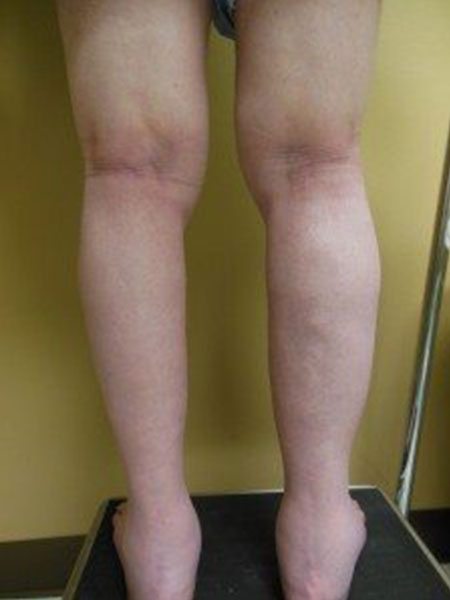Leg Swelling
Leg swelling or "edema", especially located between the feet and knees is unfortunately very common and can be caused by a long list of possibilities.
Everything from dysfunction of a vital organ like the heart, liver, or kidneys, to various medications, to a sedentary life-style and obesity (often combined) as well as inherited or acquired vein or lymph problems can contribute to swelling of the legs. Even malnutrition and certain malignancies can cause leg swelling. Interestingly, we have found occupation contributes less to leg swelling than most patients would think and that even healthy people may develop mild ankle swelling when sitting in one position for a long period of time (eg. airplane seat).
In our type of medical practice, which specializes in treating vein disease, we work daily to determine what exactly might be the cause of a patient’s leg swelling so that we can develop a treatment plan to relieve leg discomfort. We ask all patients if one leg swells more than the other or if the swelling resolves after being in bed overnight. We review a patient’s medical and surgical history, any available lab work and ask about activity levels, including exercise routines-both type and frequency. Finally, we inquire about any associated discomfort from the lower back down to the feet since orthopedic and neurologic issues can indirectly result in the development of leg swelling.
Physical exam coupled with in-office ultrasound testing of the leg veins allows a rapid and accurate assessment of circulatory status. Observing a patient’s walking pattern in our office, even if aided by a cane or walker, can help determine the cause of lower leg swelling.
So what are the most frequent causes of lower leg swelling that we encounter at Vein Specialists of Tampa?
Swelling or edema caused by failure of the numerous small one-way valves in leg veins result in sluggish flow of blood from the legs back to the heart. This results in the development of higher than normal pressure in these veins which should not be confused with “high blood pressure”. The latter is a completely different problem that exists in arteries…not veins. But, since blood is mostly water and veins have pores, just like your skin, when the blood in leg veins becomes sluggish and under higher pressure, water in blood escapes out of the vein into the fat and skin of the lower leg, resulting in swelling. Now days, treatment for this problem can be performed with a laser and local anesthetic in our office and in under an hour.
Another cause of leg swelling we see is from a major vein blockage; either as a consequence of a previous blood clot or due to external compression of a major vein from an organ within the pelvis. Defining the cause here is a bit more involved and often requires obtaining a CT or MRI scan of the pelvis for a definitive explanation. Treatment may involve placing a metal stent within the narrowed vein.
Specific medications used for arterial high blood pressure control can also cause leg swelling–usually of both legs. Adjustment of dose, a change to a different drug or the addition of a “water pill” is the usual course of management here.
The combination of weight gain, limited to no exercise, and the subtle change in walking motion that occurs in most patients with aging is a common source of patient leg swelling. The treatment triad of weight loss, exercise-especially calf and ankle exercises-and gentle compression socks or hose is a logical and effective recommendation in these cases.
Finally, problems with our lymphatic system, a system similar to veins but tasked with transporting clear fluid out of our legs and into our blood stream, is often determined to be the culprit for leg swelling. The lymphatic fluid transport system is prone to malfunction as a result of prior leg infections, surgery and obesity. While the mechanisms by which infection and surgery damage the lymphatic system are understood, obesity which has a surprisingly common association with lymphatic insufficiency of the leg, is not well understood. We do not understand why obesity itself reduces the transport of this lymph fluid through the lymphatics. There is growing suspicion that for some reason obesity causes scaring if not destruction of the lymphatic channels that are ordinarily tasked with carrying the lymph fluid out of the legs. And again, compression hose and weight loss, along with exercise and skilled manual leg massage have been found to help reduce this type of swelling.
So, despite leg swelling being common, a bit of detective work is usually required to arrive at a diagnosis and then develop a treatment plan to reduce or eliminate this burden.






